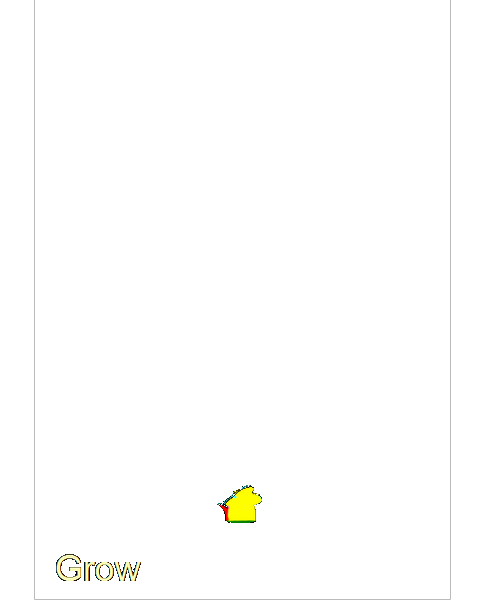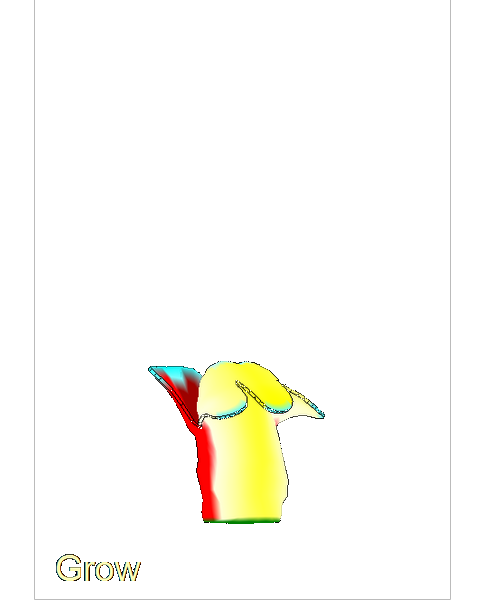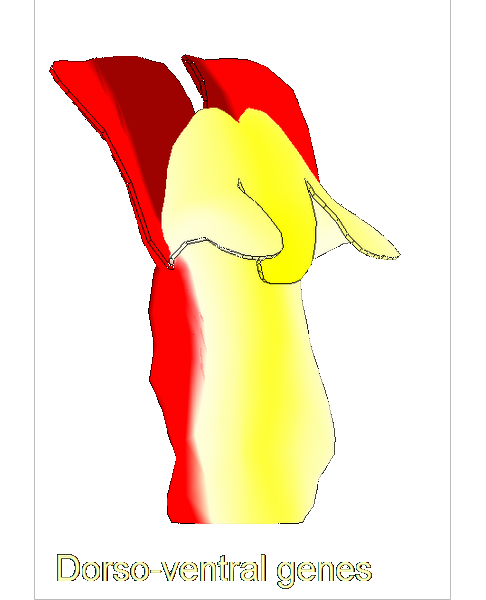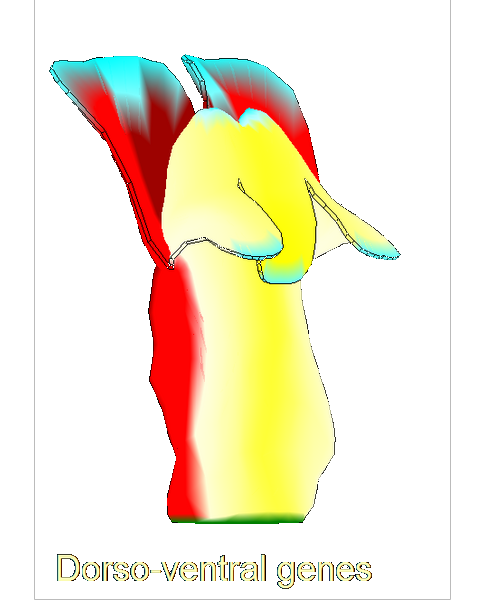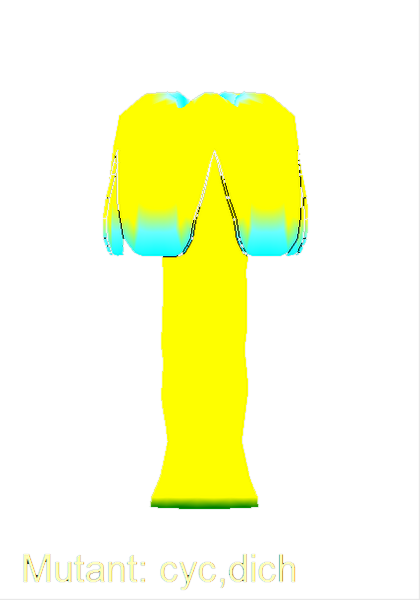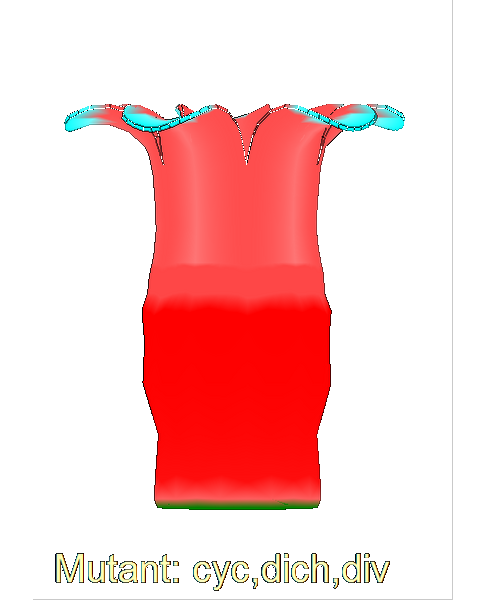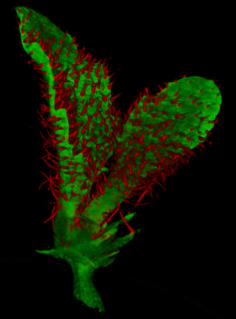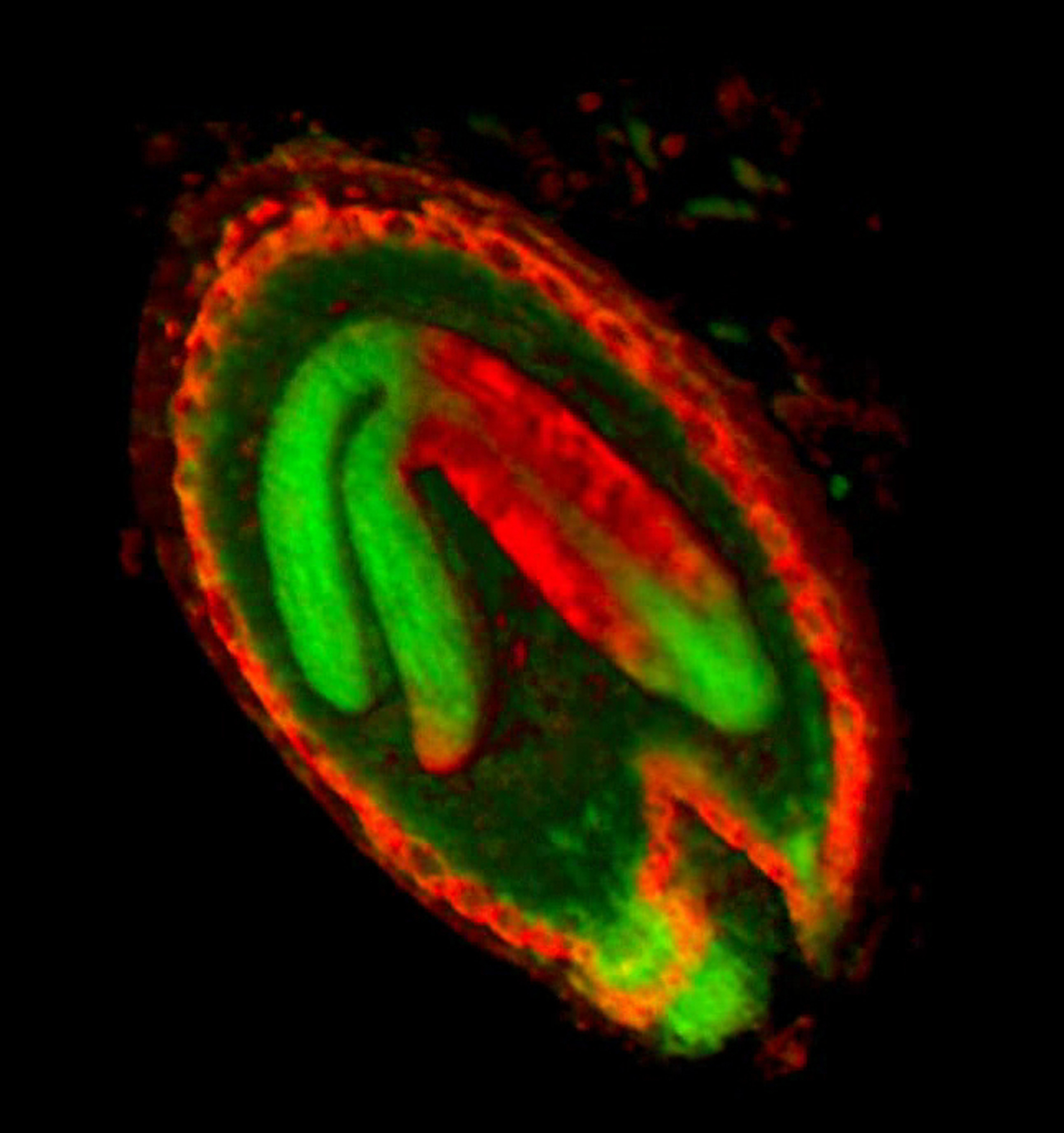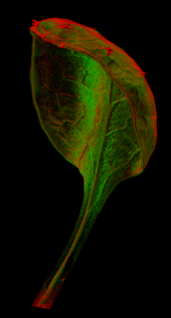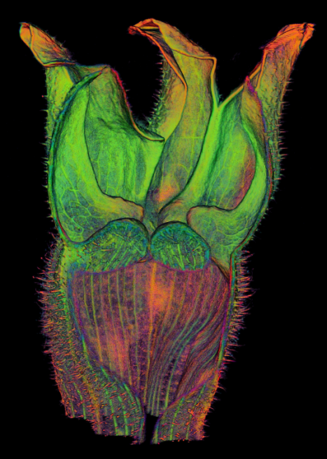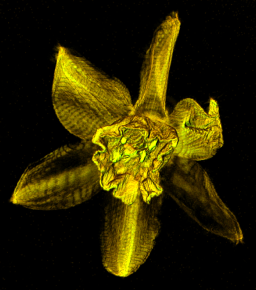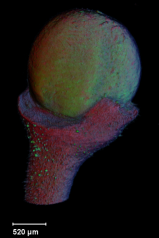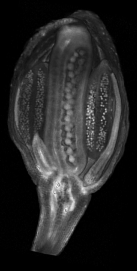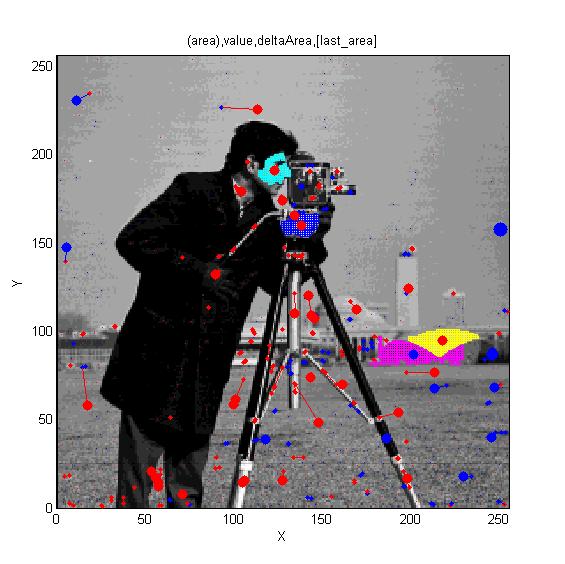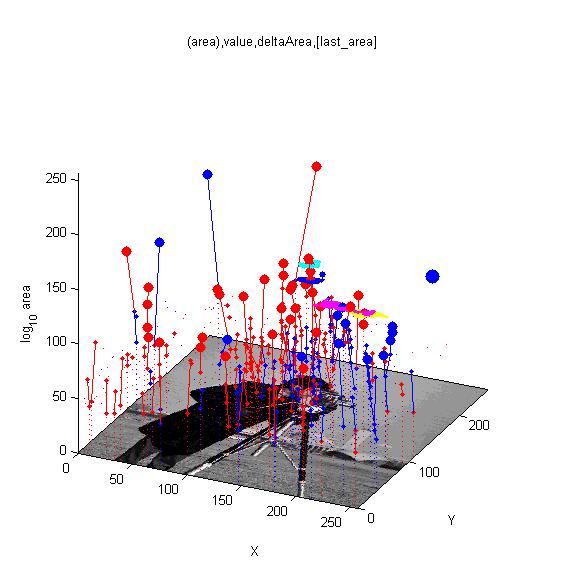|
|
| Line 66: |
Line 66: |
| [[Image:tentacles_morphogenesis.png|600px]] | | [[Image:tentacles_morphogenesis.png|600px]] |
| |} | | |} |
| <br>
| |
| [[Software#Reaction-diffusion and morphogenesis|<span style="color:Green;">'''MORE'''</span>]]<br><br>
| |
| In 1952 Alan Turing proposed [http://rstb.royalsocietypublishing.org/content/237/641/37.abstract The chemical basis of Morphogenesis] - "... suggested that a system of chemical substances, called morphogens, reacting together and diffusing through a tissue, is adequate to account for the main phenomena of morphogenesis. Such a system, although it may originally be quite homogeneous, may later develop a pattern or structure due to an instability of the homogeneous equilibrium, which is triggered off by random disturbances. ..." Such patterning is now [http://en.wikipedia.org/wiki/Reaction%E2%80%93diffusion_system widely known]. However, the morphogenesis element of the story has been less widely explored - here we illustrate the process using ''GFtbox'' - but also see: [http://www.sciencedirect.com/science/article/pii/S1360138507000611 plant meristem][http://home.thep.lu.se/~henrik/mnxa09/Jonsson2012.pdf review related plant stuff]
| |
|
| |
|
| Two chemical substances react and diffuse to dynamically develop a pattern of spots (top row). We have added two simple growth rules ([http://www.ploscompbiol.org/article/info:doi/10.1371/journal.pcbi.1002071 based on our hypotheses on the growth of shapes]) to dynamically translate the pattern into a pattern of growth (bottom row). The changing geometry arising through growth which in turn feeds back on the reaction-diffusion system to modulate patterning. One of the morphogenesis rules uses the chemical concentration gradient to set the axes for anisotropic growth (arrows in third panel).
| | [[Software#Reaction-diffusion and morphogenesis|<span style="color:Navy;">MORE</span>]]<br><br> |
| | |
| This model was featured in a video interview exhibit in the London Science Museum 'Codebreakers' exhibition [http://www.sciencemuseum.org.uk/visitmuseum/galleries/turing.aspx Codebreakers]. <br>
| |
| [[Software#Reaction-diffusion and morphogenesis|<span style="color:Navy;">More details on reaction-diffusion and morphogenesis</span>]]<br><br> | |
Revision as of 12:11, 25 November 2013
Computational biology toolboxes
Growing complex biological shapes from patterns of gene expression
MORE
Viewing three dimensional images
MORE
Analysing shapes: faces, leaves and flowers

MORE
Seen the origional paintings? Do they exist?.
Algorithms
MSER's, extrema, Connected-set filters, Sieves and Scale-space
MORE More
Reaction-diffusion and morphogenesis - the growth of shapes
MORE

